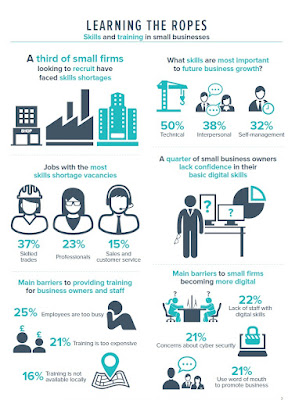Small businesses may not have the resources or budget of their larger counterparts for learning and development activities, but that doesn’t mean they should simply ignore it.
The most recent report (2017) from the Federation of Small Businesses indicates that while 91% of small businesses recognise the value of staff training and development, both in terms of increasing the value of an employee’s contribution to the business and in terms of employee retention, just 43% of British SMEs are currently investing in training and development.
The cost of providing training was cited as the primary reason small businesses don’t offer their staff a training and development programme, with 43% identifying this as an issue. 34% of the businesses surveyed by the FSB indicated that they don’t provide training because they don’t have access to relevant training options in their area.
So, you’re responsible for your small to medium sized company’s employee development, here are a few challenges that are often faced in your situation.
Some other interesting information is shown in this infographic based on the FSB report.
The 3 most common L&D challenges for SMEs are:
Strategy & Leadership
- Developing your L&D “Brand”
- Developing L&D as a business driver
- Learner focused
- Learning & Development Capacity
- Understanding your company needs
- The role of management
- Employee engagement
Implementation (Operations and Learning Resources)
- Learning administration
- Planning
- Vendor/Trainer selection
- Technologies
- Aligning learning with company goals
- Job analysis
- Needs analysis
- Using technology for learning
- Evaluate
- Report
- Review
- Improve
Next time: Part 2; Strategy - Why do we need an L&D strategy.
If you would like to read the eBook on which these blogs are based please go to An SMEs Guide to L&D for your free copy.
Les HeathSenior L&D Strategy Implementation Specialist
07847 540536





Comments
Post a Comment